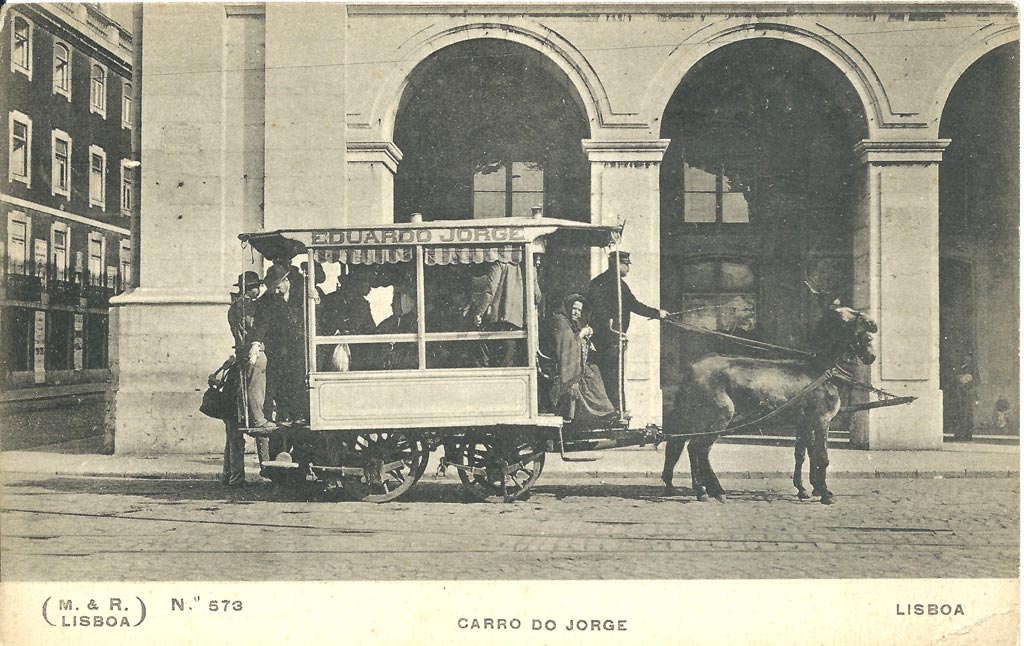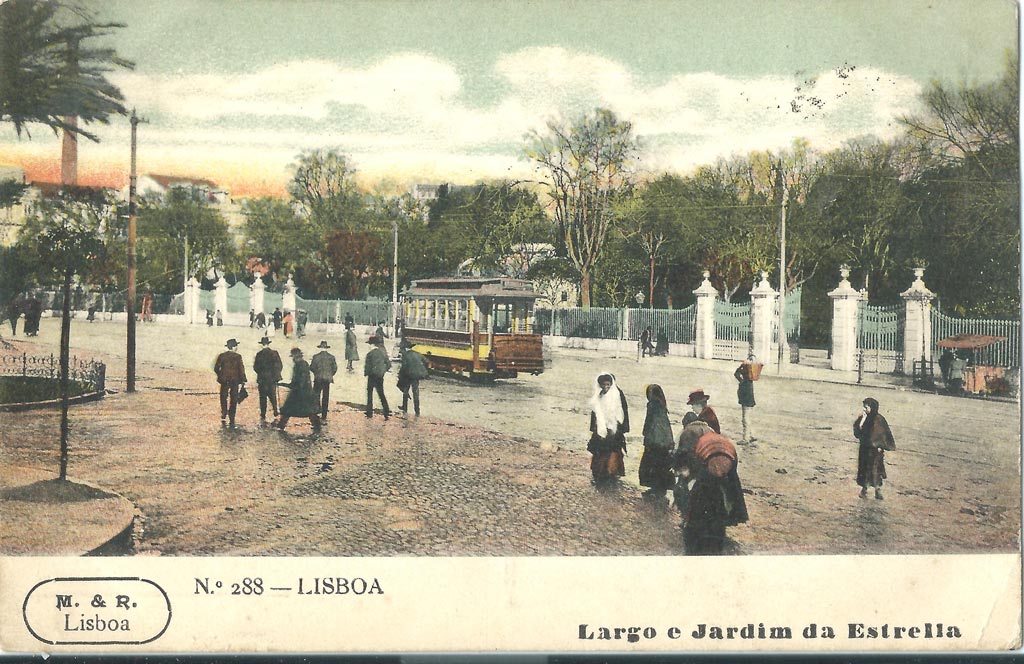Original article published on 9 September 2020
Today we want to talk about the first means of transport of Lisbon. Among them, we find the origin of one of the biggest icons of the city: the Trams.
Alongside monuments such as Sé or Belém Tower, tiles, the portuguese pavement, the historic lifts and funiculars, or even alongside sardines, there’s always the Tram that, for over 100 years, has crossed the seven hills of Lisbon.
But what is its origin? Have you ever heard of the Omnibus, Larmanjat or Americano? It might get you curious if we tell you that these are the names of the first means of transport of Lisbon.
Get to know Lisbon’s historic neighbourhoods in a guided tour and discover unmissable places of this magnificent city.
The First Means of Transport of Lisbon
In the last decades of the 19th century there was a sharp population increase and consequently, a growing need for transport. This was decisive for the development of the first means of transport of Lisbon.
Similarly, the revolution in transport was responsible for the possibility of expansion for the city.
The Chaise and Mail Coach

At the time transport was dependent on private or rental means of transport, such as the Chaise and Mail Coach, which were ineffective and costly.
The Chaise, from the late 18th century, has a narrow body sitting on two wheels and is drawn by one or two horses.
The Mail Coach service was carried out with diligence and it was destined for the transport of mail, but it also took passengers. The aim was to make the connection between Lisbon and Porto but this service ended up only being able to connect the capital to Coimbra between 1798 and 1804, a short period of time due to low demand, which was a consequence of high prices.
You can see examples of these means of transport in the National Coach Museum, in Belém.


The Omnibus

One of the first means of transport of Lisbon appeared only in 1834 with the introduction of the Omnibus, a coach that could take up to 15 passengers, drawn by one or two pairs of horses.
In the following year the business was sold and the Companhia de Carruagens Omnibus was created. It operated between the city and the periphery (Loures, Mafra, Oeiras, Sintra…), as well as in two fixed routes within the city that connected the Município Square to Santa Apolónia, and Santa Apolónia to Rato.
Due to the high prices the less wealthy social layers of the population couldn’t afford this service and thus the company didn’t survive and shut down in 1865. Other small companies were then created and they only operated specific routes.
The Larmanjat

In 1870, at the initiative of the Duke of Saldanha, the Larmanjat was set up in Lisbon. It was a system invented by a French man with this same name and it consisted of a monorail, where a locomotive drew a series of carriages.
Saldanha in partnership with English capital founded the Lisbon Steam Tramways Company. Inaugurated in 1873, they built the lines that connected the Rego area in Lisbon to Sintra and to Torres Vedras. The connections to the city centre were still done in combination with the omnibus.
Poorly designed constructions with poor quality materials resulted in numerous derailments and delays that two years later led the company to cease operations. The Larmanjat was mocked by the Portuguese and the company accused of corruption in London… an international scandal.
The Americano and Carris

The so-called Americanos (Americans) appeared in New York in 1832. Just like the Omnibus, they were carriages drawn by animals, but they circulated on rails.
In Portugal the first were adopted in Porto in 1871 and after countless bureaucratic issues, they were approved in Lisbon in the following year.
For that, the creation of the Companhia Carris de Ferro de Lisboa was fundamental. It was surprisingly founded in Rio de Janeiro in 1872, a city where this system already operated with success and where several competitors already operated as well.
With rails imported from England, carriages from the United States and with Brazillian and Portuguese shareholders, the first route, between Santa Apolónia and Santos, was inaugurated in November 1873.
One year later the headquarters of the company moved from Rio to Lisbon. Despite many difficulties, this following period was a time of expansion of the network and technological innovation.
With time Carris bought the small Omnibus companies that still operated, becoming a monopoly of the collective transport of Lisbon.
However, there was an operator who refused to be bought by Carris until the end, having remained active until 1917. He was Eduardo Jorge, known as Chora (cry) for always moaning about his sparse profits.
In Carris Museum you can find vehicles from different eras and a replica of the Americano no. 100 projected in 1886.
| Never miss another article | Subscribe here |
The Tram

It was in the transition of the century that the system with an electrified motor with overhead conductors was implemented, a technology that finally revolutionised the sector of urban transport in Lisbon.
For that the Lisbon Electric Tramways Limited Company was founded in London, in result of a partnership of Carris with English investors.
In 1910 the network was already 115km long and had 229 trams. Its success owed to the price reduction of this service.
The access of the lower social layers of the population to urban transport, allowed a longer distance between their home and workplace. Thus, many people moved to new and cheaper neighbourhoods further away from the centre.
Carris and their revolutionary Tram were a decisive factor for the urban expansion of Lisbon.
Today the role of the Tram is different but that’s a story we’ll tell you in The Lisbon Trams, an Icon of the City!
The project getLISBON has been very rewarding and we want to continue revealing the singularities of fascinating Lisbon.
Help us keep this project alive!
By using these links to make your reservations you’ll be supporting us. With no extra costs!
• Looking for a different experience? We can create a customised itinerary based on your interests. Contact us!
• Or if you prefer tours and other activities in various destinations, take a look at GetYourGuide.
• Save time and money with a flexible Lisbon Card!




